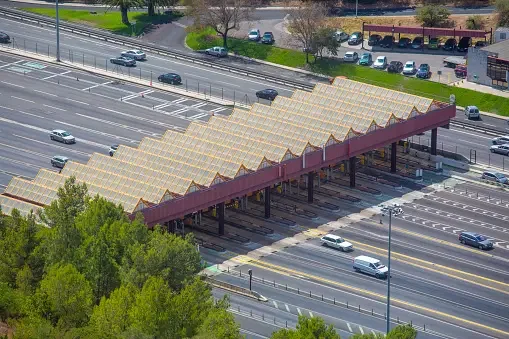Everything You Need to Know About Portuguese Tolls

Driving in Portugal can be a delightful experience, with its beautiful landscapes and charming cities. However, if you’re planning a road trip in this picturesque country, it’s essential to understand the ins and outs of Portuguese tolls. In this article, we’ll dive into the fascinating world of Portuguese tolls, exploring the different types, payment methods, toll-free highways, and essential driving tips. Buckle up and get ready to embark on an exciting road trip!
Introduction
Driving on toll roads is a common occurrence in many countries, and Portugal is no exception. Whether you’re a local resident or a tourist exploring this vibrant nation, you’ll likely encounter tolls during your journey. Understanding how the toll system works can help you navigate the roads with ease and avoid any surprises along the way.
What are Portuguese Tolls?
Portuguese tolls refer to the fees collected for using certain roads, bridges, and tunnels across the country. These tolls play a crucial role in maintaining and expanding the infrastructure network, ensuring smooth transportation for all. Portugal offers an extensive road network, including highways, expressways, and national roads, with various toll systems in place.
Types of Portuguese Tolls
1. Traditional Toll System
The traditional toll system in Portugal involves physical toll booths where drivers pay their tolls in cash or with a credit card. These toll booths are usually located at regular intervals along the road, and you must stop to make the payment. While this method is straightforward, it can sometimes cause delays, especially during peak travel seasons.
2. Electronic Toll Collection
To enhance convenience and reduce congestion, Portugal introduced the Electronic Toll Collection (ETC) system. This system allows drivers to pass through toll points without stopping, as tolls are automatically deducted from a pre-paid account linked to their vehicle. The ETC system utilizes various technologies, such as radio frequency identification (RFID) and license plate recognition, making the process seamless.
How to Pay Portuguese Tolls
When it comes to paying Portuguese tolls, you have several options at your disposal.
Payment Methods
1. Via Verde System
The Via Verde system is a popular choice for many drivers in Portugal. It involves installing a small electronic device in your vehicle, which communicates with the toll infrastructure. As you approach a toll point, the device automatically registers your passage and deducts the corresponding toll amount from your prepaid account. This method saves time and eliminates the need for cash or card payments.
2. Toll Service Stations
Toll service stations are conveniently located along major roads, providing a quick and easy way to pay tolls. Simply drive up to the station, make the payment in cash or with a card, and continue your journey hassle-free.
3. Online Payment Options
For those who prefer to pay their tolls online, several platforms and apps allow you to do so. These platforms typically require you to provide your license plate number and the details of your journey to calculate the toll amount accurately. Once the payment is made online, you’re good to go.
Toll-Free Highways in Portugal
While tolls are prevalent in Portugal, there are also several toll-free highways that offer a budget-friendly alternative for travelers.
Key Toll-Free Routes
Some of the major toll-free routes in Portugal include the A1, A2, A3, A4, A8, and A22 highways. These routes connect major cities and popular tourist destinations, allowing you to explore the country without incurring toll expenses.
Advantages of Toll-Free Highways
Opting for toll-free highways not only saves you money but also provides a scenic driving experience. These routes often pass through picturesque landscapes, charming towns, and historical sites, adding an extra touch of beauty to your journey.
Tips for Driving in Portugal
To ensure a smooth and enjoyable road trip in Portugal, keep the following tips in mind:
Road Signs and Symbols
Familiarize yourself with the road signs and symbols used in Portugal. Understanding the meaning of different signs will help you navigate the roads effectively and stay safe.
Speed Limits
Observe the speed limits while driving in Portugal. The standard speed limit on highways is 120 km/h (75 mph), but it can vary depending on the type of road and the prevailing conditions.
Toll Violations and Penalties
Failure to pay tolls or improperly passing through toll points can result in penalties and fines. Ensure you understand the toll system and follow the appropriate payment methods to avoid any legal consequences.
Conclusion
Portuguese tolls are an integral part of the country’s road infrastructure. By familiarizing yourself with the various toll systems, payment methods, toll-free highways, and driving tips, you can embark on a stress-free road trip across Portugal. So pack your bags, buckle up, and get ready to explore the wonders of this captivating nation!


